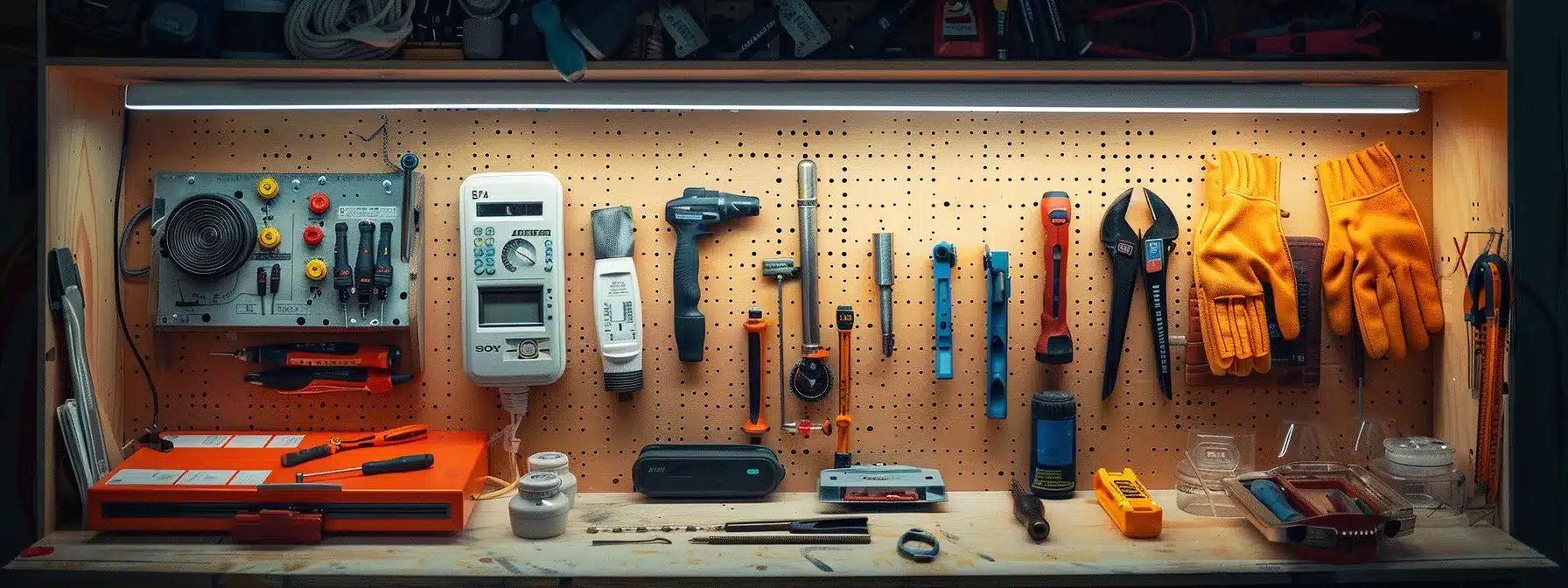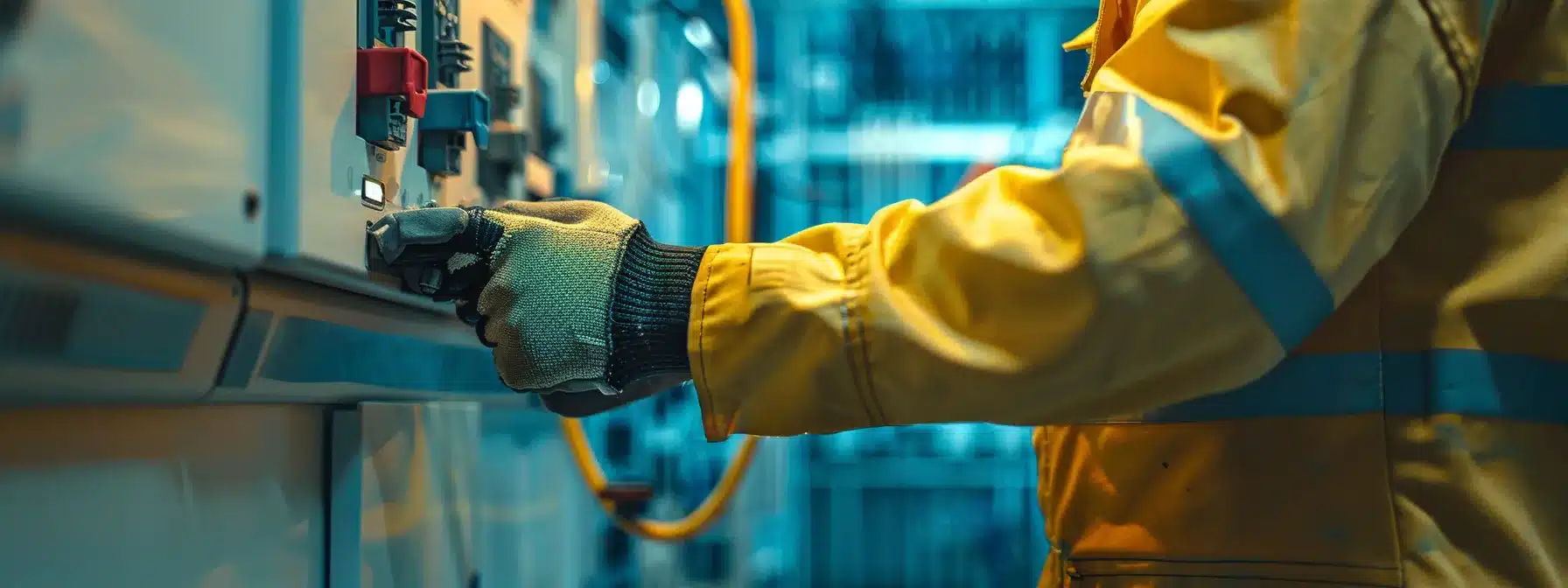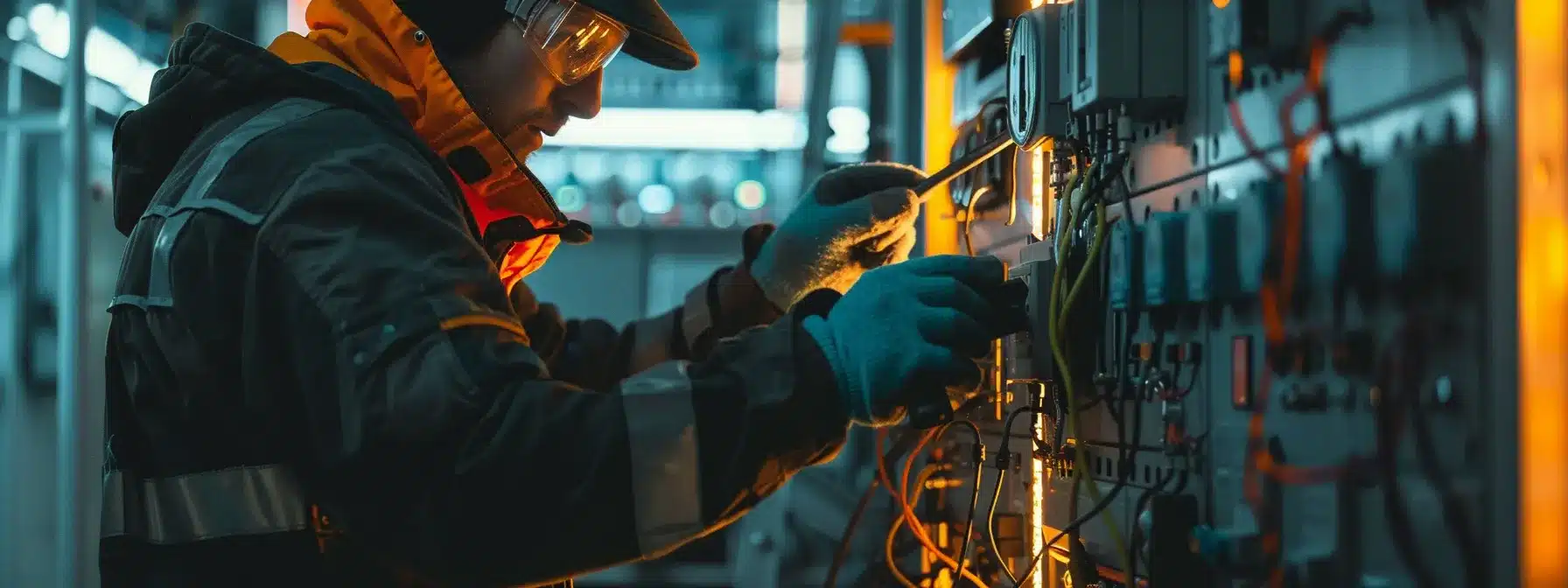When your circuit breaker trips unexpectedly, it can cause a stir, especially if the power supply is critical. Knowing how to tackle issues caused by electric arcs or faulty diodes is important. Often, metal components wear out, compromising the functionality of your circuit breaker and potentially risking safety. In the following sections, readers will uncover common circuit breaker issues, essential tools for repairs, and safety precautions to follow before starting any work. Keep reading to learn how to restore your electrical system confidently and efficiently!
Key Takeaways
- Recognizing signs of circuit breaker failure is crucial for safety and maintenance
- Frequent tripping or strange smells indicate significant electrical issues needing professional attention
- Regular inspections and upgrades of electrical systems prevent costly repairs and hazards down the line
- Using proper safety gear and tools is essential when tackling circuit breaker repairs
- Establishing a maintenance schedule helps keep electrical systems running smoothly and safely
Identifying Common Circuit Breaker Issues

Recognizing the signs of circuit breaker failure is key to maintaining a safe electrical environment at home or in a business. A flickering light, an odd smell, or a breaker that frequently trips could indicate that there’s a bit more going on than just a simple overload. It’s crucial to differentiate between minor annoyances and critical issues that could be hiding behind a high voltage problem. Understanding why breakers trip—whether due to an overload, short circuit, or equipment malfunction—can help prevent future headaches. Keeping an eye on these issues and using a mobile app to track your system can really make a difference. Plus, pressing that emergency electrician reset button isn’t always enough; timely repairs can prevent bigger problems down the road, especially when considering the importance of an interlock system in some setups.
Recognizing Signs of Circuit Breaker Failure
One of the first things to look for when assessing a circuit breaker is unusual behavior. If the lights flicker or dim while using an appliance, it might be time to grab a multimeter. A qualified electrician can help check the voltage levels to ensure everything is running smoothly, especially if the HVAC system is affected during those hot summer days.
If a circuit breaker trips frequently, homeowners should pay attention. This often signals underlying issues that need fixing, such as an overloaded circuit or a malfunctioning thermostat in the HVAC system. Ignoring these signs can lead to more significant problems and may even void a warranty if repairs are needed later on.
Strange smells or sounds coming from the breaker box should raise immediate concerns. These symptoms might indicate overheating or a potential short circuit that could lead to major electrical hazards. Consulting with an electrician is essential to safely diagnose and resolve these issues, ensuring that both home and of HVAC systems remain reliable.
Differentiating Between Minor and Critical Issues
When assessing circuit breaker issues, it’s essential to recognize the difference between minor annoyances and serious problems. For instance, if the kitchen oven trips a circuit occasionally, it may just be an overloaded circuit due to heavy use. On the other hand, consistent tripping could point to deeper issues requiring an expert electrician, especially if it’s related to the internal electronics of the oven itself.
Another common scenario involves fluctuating power affecting various household appliances. If a breaker trips when an air conditioner kicks on, it might be a harmless overload. However, if there’s an underlying problem, such as a faulty capacitor, it’s crucial to seek professional help before it escalates into a more significant electrical hazard. Ignoring odd behaviors could lead to costly repairs and puts the entire electrical system at risk.
Understanding resistance, measured in ohms, can also assist in identifying electrical concerns. If an appliance consistently causes the breaker to trip, it may indicate a critical malfunction. An expert can check the resistance across different components and determine if any are failing, which can help identify whether the issue is minor or a more complex electrical fault requiring immediate attention.
Understanding the Cause Behind Tripping Breakers
Understanding why circuit breakers trip can save time and costs. Many times, it relates back to issues within the electrical wiring that just need a little TLC. A thorough visual inspection can catch frayed wires or loose screws, which might be the culprit behind those annoying interruptions.
Another common cause for a circuit breaker to trip is overloaded circuits. This can happen when too many high-demand appliances are plugged into one circuit. A maintenance guide should be consulted to ensure that the load on each circuit is within safe limits.
Finally, issues can arise from aged or faulty equipment. Regular inspections of appliances and breakers themselves can detect issues before they escalate. Sometimes, a simple adjustment of screws can make a world of difference and keep the electrical system running smoothly:
The Importance of Timely Repairs
Timely repairs on circuit breakers can prevent potential hazards, including damaging electrical fires. For instance, a malfunctioning microwave oven that trips a circuit breaker might not just be an inconvenience; it could signal a deeper issue like faulty wiring. Addressing these problems quickly ensures fire safety and helps keep homes and businesses secure.
Electrical systems running continuously without proper care can lead to wasted energy and increased utility bills. If a breaker is frequently tripped due to an overloaded circuit, it’s essential to investigate the cause. Seeking prompt repairs can restore balance to the system, ensuring appliances work efficiently and safely.
An unusual odor emanating from the breaker box often indicates trouble, such as burning insulation or overheated components. Ignoring this warning sign can lead to serious equipment failure or even fire. By taking immediate action to fix these issues and replace any damaged fuses, individuals can maintain a safe and functional environment.
Understanding the common issues with circuit breakers is just the beginning. Armed with the right tools, anyone can tackle those repairs and keep their home safe and powered!
Essential Tools for DIY Circuit Breaker Repair

Before jumping into any emergency circuit breaker repair, having the right setup is essential. Homeowners should ensure they have safety equipment posted nearby, including gloves, goggles, and a first-aid kit. Troubleshooting a circuit breaker or addressing a short circuit requires specific tools, like a multimeter for testing voltage and a screwdriver set for accessing panels. Plus, a clear and organized workspace can make a big difference—removing any clutter that may obstruct movement helps prevent accidents. When preparing to tackle a relay issue or a clogged circuit breaker, a little bit of planning goes a long way in making the repair process smoother and safer.
The Safety Equipment Every Homeowner Needs
Homeowners looking to take on DIY circuit breaker repairs should start by gathering appropriate safety equipment. Gloves and goggles are essential for protecting against electrical shocks and debris while troubleshooting. Having a first-aid kit nearby is a smart move since it ensures quick access to help in case of any minor accidents that might happen during the process.
In addition to personal safety gear, a sturdy pair of work boots can offer extra protection when navigating around appliances and switchgear. These boots provide stability and safeguard against slipping, especially when dealing with any water issues related to air conditioning units. Maintaining a clean workspace free from humidity will also help keep a safe environment while tackling any electrical concerns.
Finally, using shock-resistant tools during repairs is a must. A multimeter can measure voltage and ensure everything is running smoothly, particularly when dealing with circuit breakers tied to air conditioning systems. By prioritizing safety equipment and tools, homeowners can confidently address any issues that arise, keeping their home’s electrical system functioning well.
Key Tools for Troubleshooting and Repair
Having a reliable multimeter is essential for anyone tackling circuit breaker issues. This handy tool measures voltage, helping to ensure that everything is functioning correctly. When checking circuits or wires, understanding the voltage levels can prevent further complications, so it’s a must-have in any DIY toolkit.
Another important tool for troubleshooting is the ohmmeter. This device measures resistance in electrical components, allowing users to identify faulty wires or connections. Understanding resistance can help sort out minor problems versus more significant failures requiring professional help.
Preparing Your Workspace for Electrical Work
Setting up a workspace for electrical work requires careful consideration of safety and accessibility. Homeowners should choose a dry and well-lit area to minimize hazards, specifically when dealing with circuit breakers or testing devices like a rectifier. Clearing the space of any clutter ensures that there’s enough room to maneuver safely and reduces the risk of accidents.
A well-organized workspace allows for efficient troubleshooting when issues arise. Having tools like screwdrivers and a multimeter within reach can streamline the repair process, especially when diagnosing problems with a circuit breaker. Homeowners should also ensure that necessary safety gear, such as gloves and goggles, is easily accessible to enhance protection as they work with electrical equipment.
Finally, ensuring a comfortable temperature in the workspace adds to both safety and efficiency. If it’s too hot or humid, it can make working with electrical components, including rectifiers, less pleasant and more challenging. Ventilation also plays a vital role in keeping the workspace fresh and reducing any potentially harmful fumes that could arise during repairs.
Before diving into repairs, it’s crucial to gear up with the right safety measures. Taking a moment to protect yourself can make all the difference in your DIY circuit breaker journey!
Safety Precautions Before Starting Repairs

Before diving into emergency circuit breaker repairs, a few critical safety measures help ensure a smooth and safe experience. First, turning off the main power supply is crucial—it protects against unexpected electrical shocks. Equipping oneself with the right protective gear, such as gloves and goggles, shields against potential mishaps while working with live wires. Lastly, verifying the absence of electricity in wires should always be a priority, as this extra step confirms that the workspace is safe before proceeding with any repairs. Taking these precautions lays the foundation for a hassle-free and safer repair process.
Turning Off the Main Power Supply
Turning off the main power supply is a non-negotiable step before starting any circuit breaker repair. It not only ensures the safety of the individual working on the system but also protects the electrical components from potential damage. Before making any adjustments or repairs, it’s wise to identify the main circuit breaker in the panel and switch it off.
This shut-off process can prevent energy flow and minimize the risk of electrical shocks while handling wires and connectors. After the main power supply is turned off, it is good practice to use a voltage tester to double-check that no electricity is present. This extra step gives everyone peace of mind and adds an additional layer of safety.
Once the power is off and all tools are gathered, the real work can begin. A clear understanding of the setup allows for more efficient repairs without worrying about live wires or unexpected sparks. For effective circuit breaker repair, follow these safety strategies:
- Locate the main circuit breaker in the electrical panel.
- Switch it off to cut off power to the entire system.
- Use a voltage tester to confirm there’s no electricity flowing.
- Gather all necessary tools and safety equipment before starting work.
Using Protective Gear Effectively
Wearing protective gear is crucial when dealing with electrical repairs, especially for circuit breakers. Homeowners should ensure they don gloves that are insulated to prevent any electrical shock while working with wiring. Additionally, goggles will protect the eyes from unexpected debris or sparks, providing an extra layer of safety during the repair process.
For enhanced safety, it’s a good idea to invest in rubber footwear designed for electrical work. These shoes help reduce the risk of shock and provide better grip when moving around the workspace. Homeowners can feel more secure tackling repairs, knowing their feet are protected, especially when dealing with potential water hazards near appliances.
Finally, having a first-aid kit readily available can be a lifesaver, just in case something unexpected occurs. Being prepared with appropriate safety gear gives homeowners greater confidence, allowing them to focus on troubleshooting and repairs without the worry of potential injuries. A little prep goes a long way in ensuring the whole process runs smoothly and safely.
Verifying the Absence of Electricity in Wires
Before delving into repairs, confirming the absence of electricity in the wires is a must. This step ensures that the circuit is safe to work on and can prevent unexpected shocks while handling various components. Homeowners should prioritize this check to give themselves peace of mind as they tackle their repairs.
A voltage tester serves as an essential tool during this verification process. It effectively detects whether electricity is present in the wires, ensuring a thorough assessment. When using a voltage tester, it’s crucial to follow the guidelines provided by the manufacturer for accurate results.
Once the voltage tester confirms that no electricity is flowing, individuals can proceed to make repairs with confidence. It’s a good practice to double-check each wire group, especially those leading to the area being worked on. Adopting this habit can lead to a safer environment and fewer risk factors during electrical work:
- Use a voltage tester to check wires before starting work.
- Follow the manufacturer’s instructions for the tester.
- Double-check all wires leading to the work area.
With safety measures in place, it’s time to tackle the task at hand. Get ready to roll up your sleeves for a straightforward guide to repairing that circuit breaker!
Step-by-Step Guide to Repairing a Circuit Breaker

Repairing a circuit breaker can seem daunting, but breaking it down into manageable steps makes the process much simpler. Start by diagnosing the problem to pinpoint what’s causing the issues with the breaker. Once the culprit is identified, it’s time to remove the faulty breaker safely, ensuring all necessary precautions are taken. After that, installing a new breaker correctly is vital for a dependable electrical system. Finally, testing the repaired breaker will confirm that everything is functioning as it should. This straightforward approach allows homeowners to tackle repairs confidently and efficiently, ensuring their electrical systems remain safe and reliable.
Diagnosing the Problem With Your Breaker
When it comes to diagnosing a circuit breaker issue, the first step is to gather some essential tools. Homeowners should have a multimeter handy to check the voltage and ensure everything is performing as it should. This tool helps pinpoint issues by measuring both voltage levels and continuity, giving a clear picture of whether the breaker is functioning properly or if there’s a deeper issue at play.
Next, it’s wise to examine other appliances connected to the same circuit. If certain devices are consistently tripping the breaker, it might signal an overload. Observing patterns, like whether the breaker trips when specific appliances are in use, can steer homeowners toward identifying the root cause of the problem.
Lastly, visually inspecting the breaker and surrounding wiring is crucial. Look for signs of wear, frayed wires, or any discoloration, as these may point to underlying issues. Taking a few moments to closely examine the setup often reveals valuable clues that can lead to a successful diagnosis and ultimately a safer electrical environment.
Removing the Faulty Circuit Breaker
When it comes time to remove a faulty circuit breaker, safety should always come first. Homeowners need to ensure that the main power supply is turned off before touching any components. Once that is handled, it’s best to wear insulated gloves to minimize any risk while working around electrical parts.
The next step is to carefully access the circuit breaker panel. This usually involves unscrewing or unclipping the panel cover to expose the breakers. Homeowners should take note of how everything is connected, as this will help in installing the new breaker later on.
Now that access is secured, the faulty breaker can be gently removed. This often requires a bit of wiggling to disconnect it from the panel. Once disconnected, it’s important to inspect the wiring attached to the breaker and ensure there’s no damage before proceeding to install the replacement:
Installing a New Circuit Breaker Correctly
Once the old breaker is removed and everything is clear, it’s time to install a new circuit breaker. Homeowners should make sure they have the correct type and amperage for their specific electrical needs. Align the new breaker with the panel connections and gently push it into place until it clicks securely, ensuring a solid connection.
After securing the breaker, it’s wise to double-check all connections before closing up the panel. Making sure that the wires are firmly attached to the new breaker reduces the risk of future issues. Taking a moment to inspect everything helps ensure that the installation is done right and that no loose ends are left to cause trouble down the road.
Finally, once the panel cover is back in place, homeowners should turn the main power supply back on. Watching the new breaker closely for any signs of tripping will provide peace of mind. A successful install means that the electrical system is back up and running efficiently, keeping homes safe and powered smoothly.
Testing the Repaired Circuit Breaker
Once the new circuit breaker is securely in place, it’s time to test its functionality. Homeowners should cautiously turn the main power supply back on and observe the newly installed breaker for any immediate issues. This quick check ensures that everything is connected properly and working smoothly.
If the circuit breaker does not trip right away, homeowners can proceed to test the connected appliances. Plugging in each device one at a time while monitoring the breaker will help identify if the issue was resolved. A keen eye on any flickering lights or unusual sounds during this process can provide extra reassurance.
After confirming that the breaker operates correctly under typical conditions, it’s always wise to keep an eye on it for the next few days. Regular checks can help spot any early signs of trouble and maintain a safe electrical environment. Follow these steps for a successful repair check:
- Turn on the main power supply.
- Watch the new breaker for immediate functionality.
- Test connected appliances one by one.
- Monitor the breaker over the next few days for signs of issues.
Even the handiest DIYer knows when it’s time to call in the pros. Some electrical problems just require that extra layer of expertise to ensure safety and proper functionality.
When to Call a Professional Electrician

Knowing when to call in a professional electrician can save homeowners a lot of time and stress. While DIY repairs can handle minor issues, understanding the limits of personal capabilities is vital. Certain situations, like persistent breaker trips or the presence of strange smells, signal that professional help is necessary. Finding a certified electrician for emergency repairs ensures that the job is done safely and effectively. As any homeowner in Lexington, KY, knows, trusting the right expert makes all the difference in maintaining a safe and reliable electrical system.
Understanding the Limits of DIY Repairs
Homeowners often feel empowered to handle basic repairs, including circuit breaker issues. However, they should recognize the signs that indicate a repair is beyond their expertise. If problems persist after a few DIY attempts, it’s time to put those tools away and call in a professional.
Safety tops the list when it comes to electricity. Some situations, like flickering lights, frequent tripping, or strange odors, suggest the problem may be more serious than a simple fix. In these cases, professionals have the training and tools necessary to diagnose and repair problems without putting the homeowner at risk.
Understanding the complexity of electrical systems is crucial. Each circuit and component serves a specific purpose that not everyone grasps. Homeowners should think twice before diving into a repair; sometimes, a certified electrician can resolve issues quickly, saving time, money, and hassle:
Signs That Professional Help Is Needed
Some electrical issues are clear red flags that it’s time to call for professional help. If a circuit breaker trips repeatedly even after resetting it, that’s a strong signal that something more serious is at play. Ignoring this persistent problem can lead to larger, more costly electrical hazards down the line.
An odd smell, like burning or melting plastic, coming from the breaker box never should be brushed aside. This type of odor often suggests overheating or faulty wiring, both of which can put a home or business at serious risk for fire. Seeking professional assistance immediately ensures that these dangers can be safely and effectively addressed before they escalate.
Flickering lights can sometimes be a minor annoyance, but frequent flickering could indicate a deeper issue. If the problem persists, homeowners should not hesitate to reach out to an electrician. It’s better to be safe than sorry, especially when dealing with electrical systems, as trained professionals can diagnose issues that might be invisible to the untrained eye.
Finding a Certified Electrician for Emergency Repairs
Finding a certified electrician for emergency repairs is critical for home and business safety. Homeowners should look for qualified professionals who can handle urgent electrical issues efficiently. Checking online reviews and asking for recommendations can help narrow down options to trustworthy electricians in the area.
When reaching out to potential electricians, ensure they hold the necessary licenses and insurance to guarantee quality work. It’s also important to verify their experience with circuit breaker systems and emergency repairs, as these factors can affect the outcome of the job. Homeowners should inquire about response times, especially for urgent situations, to ensure they get timely assistance.
Pricing and service agreements should also be discussed upfront to avoid surprises later on. Many electricians offer free consultations that give homeowners peace of mind about costs before any work begins. Knowing these factors helps homeowners make informed decisions when selecting a certified electrician for their emergency repair needs:
- Check for necessary licenses and insurance.
- Look for recommendations and reviews from others.
- Inquire about their experience with your specific issue.
- Ask about response times for emergencies.
- Discuss pricing and service agreements ahead of time.
Knowing when to bring in a pro can save you from headaches down the line. Now, let’s talk about how preventative maintenance can keep your electrical systems running smoothly and tackle issues before they arise!
Preventative Maintenance to Avoid Future Breakdowns

Taking steps for preventative maintenance can go a long way in avoiding emergency circuit breaker repairs. Homeowners should prioritize regular inspections and testing of their electrical systems to catch any potential issues early on. Keeping an eye on the condition of circuit breakers is also essential; upgrading outdated or worn-out models helps maintain safety standards and efficiency. By establishing a routine maintenance schedule that covers all electrical components, individuals can ensure their homes stay safe and avoid unexpected breakdowns that could lead to costly repairs and hazards down the line.
Regular Inspection and Testing of Your Electrical System
Regularly inspecting and testing an electrical system helps homeowners stay ahead of potential issues. This proactive approach involves checking circuit breakers, wiring, and appliances for any signs of wear or malfunction. By dedicating time to these inspections, individuals can identify small problems before they escalate into bigger headaches.
Many homeowners overlook the importance of routine testing for their systems. Running periodic checks can reveal inconsistencies or irregularities that may affect performance. Engaging with a professional electrician for these assessments ensures that everything remains up to code and in safe working order.
Keeping records of inspections and any work done on the electrical system makes it easier to track changes over time. This documentation can guide future maintenance and help in recognizing patterns that might indicate underlying concerns. With a reliable electrical system, everyone can enjoy a safe and worry-free environment in their homes or businesses.
Upgrading Outdated or Worn-Out Circuit Breakers
Upgrading outdated or worn-out circuit breakers is essential for maintaining a safe electrical system. Older models may not handle today’s electrical demands, leading to frequent tripping or even hazardous situations. By replacing them with modern breakers that offer better protection and efficiency, homeowners can greatly reduce the risk of electrical issues.
A new circuit breaker can often provide features like enhanced overload protection and improved durability, helping households stay up-to-date with safety standards. Regularly assessing breaker condition helps identify when upgrades are necessary—better to be proactive than deal with preventable emergencies. Keeping up with advancements in technology can also lead to more efficient energy usage, which might save money on utility bills over time.
Homeowners should consider consulting with a licensed electrician during the upgrade process to ensure compatibility and proper installation. This step guarantees that the new circuit breakers will fit seamlessly into the existing system and function effectively. Establishing a good working relationship with a trustworthy electrician can simplify future upgrades and maintenance needs:
- Evaluate current breaker conditions regularly.
- Research newer models fitted for modern electrical needs.
- Seek professional guidance for installation and compatibility.
Implementing a Maintenance Schedule for Electrical Safety
Implementing a maintenance schedule for electrical safety is vital for anyone looking to keep their home or business in top shape. Regular checks of circuit breakers and wiring help spot potential issues before they become major headaches. By setting aside time every few months for these inspections, property owners can ensure their electrical systems run smoothly and safely.
Creating a maintenance routine doesn’t have to be a chore. Homeowners can easily integrate these checks into their seasonal upkeep, making them part of an overall home care plan. Whether it’s in the spring when cleaning up from winter or during the fall before the holiday rush, routine assessments will contribute to a safer electrical environment.
A consistent maintenance approach can help build a relationship with qualified electricians in the area as well. Regular visits allow professionals to develop an understanding of the specific electrical needs and systems at play. In turn, this rapport can lead to more effective and efficient repairs or upgrades as issues arise over time, keeping everyone’s home or business safe and sound.
Conclusion
Emergency circuit breaker repair is crucial for maintaining a safe electrical environment in homes and businesses. Recognizing the signs of circuit breaker issues and understanding when to call a professional can prevent serious hazards like electrical fires. Regular inspections and timely repairs ensure efficient operation and extend the lifespan of electrical systems. By prioritizing electrical safety and maintenance, homeowners can enjoy peace of mind and avoid costly emergencies.

